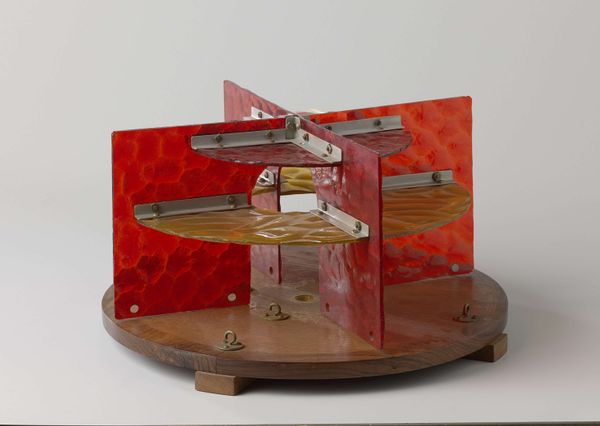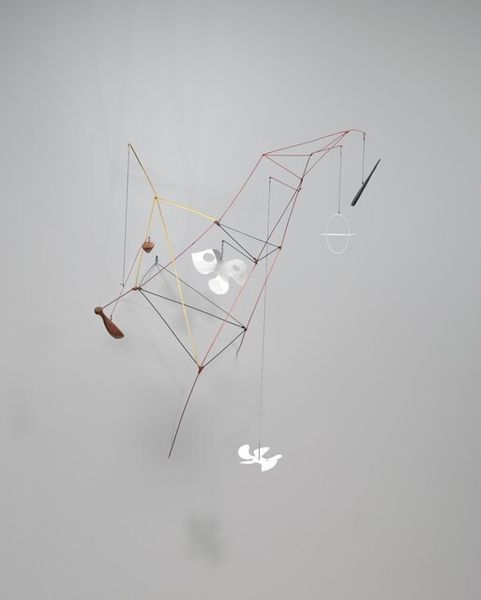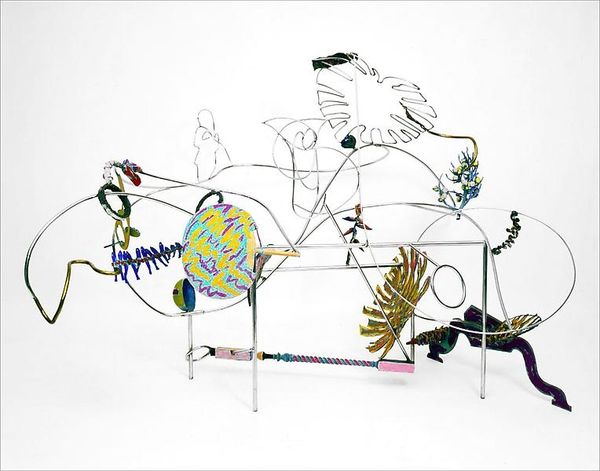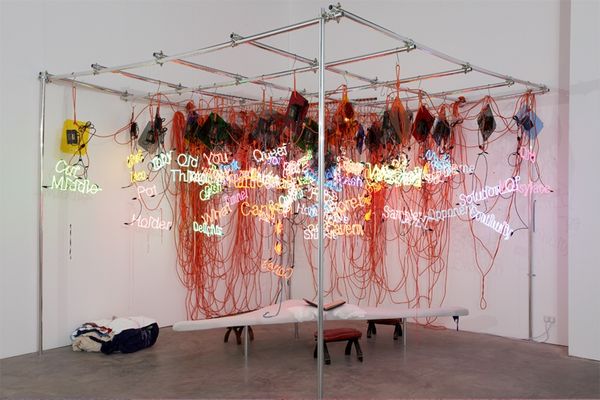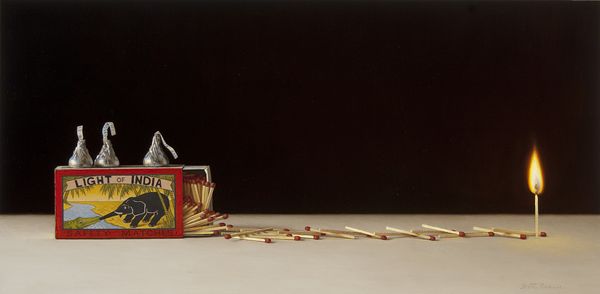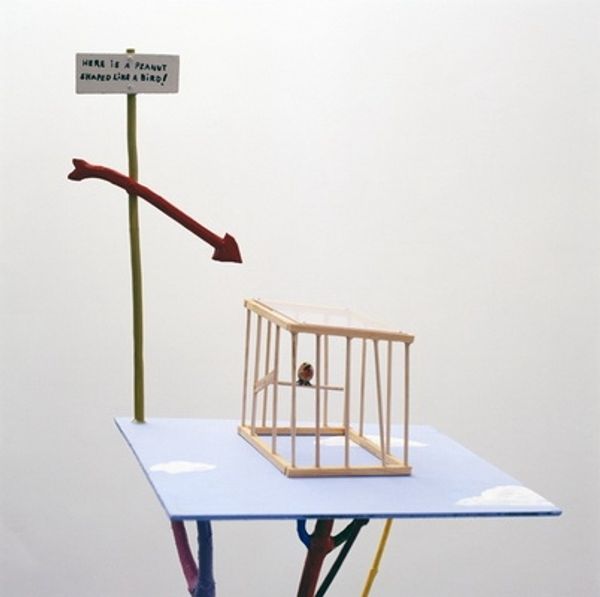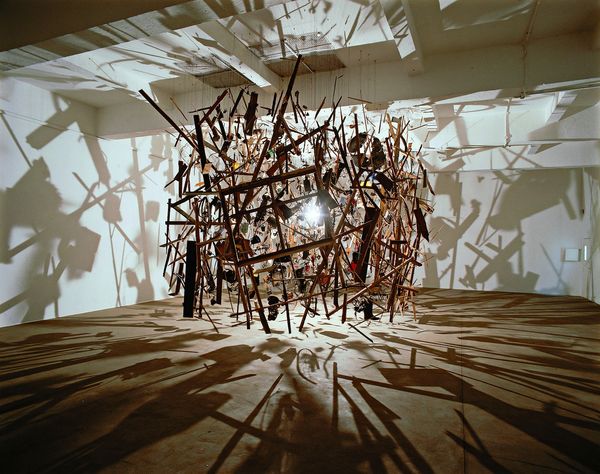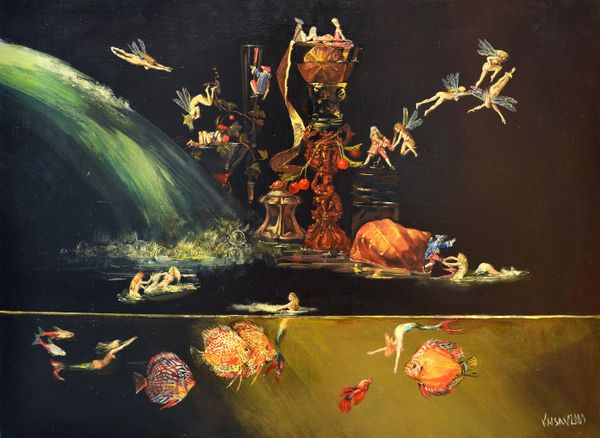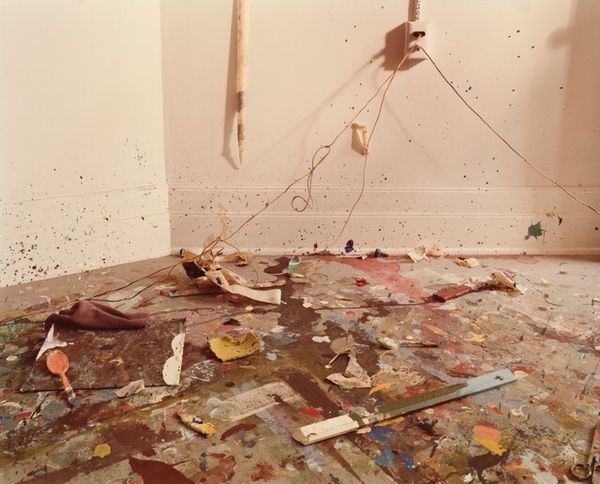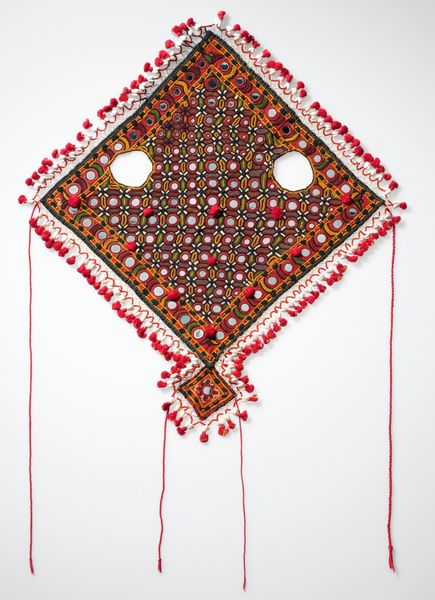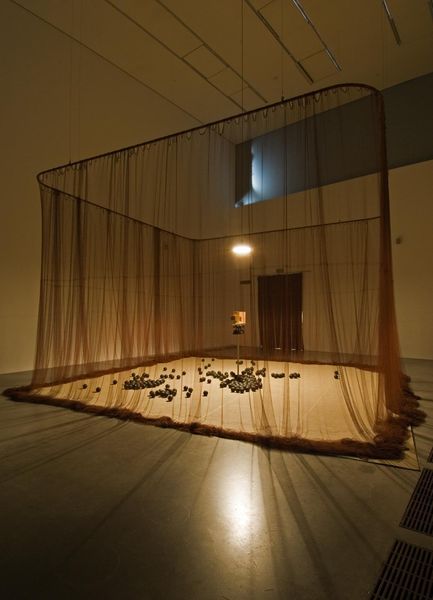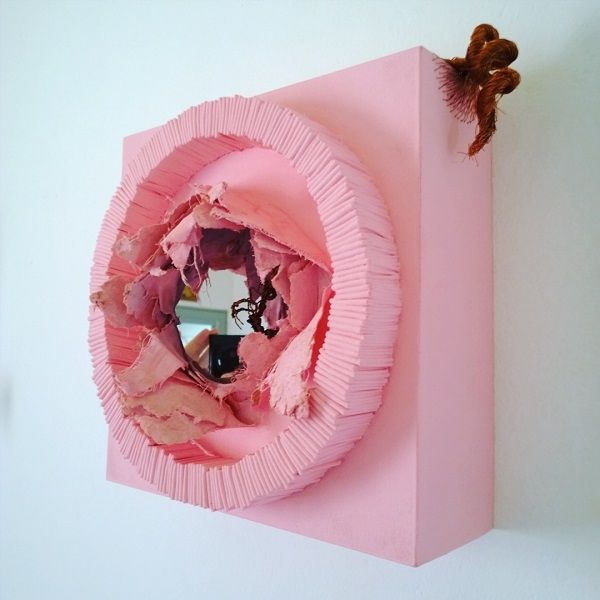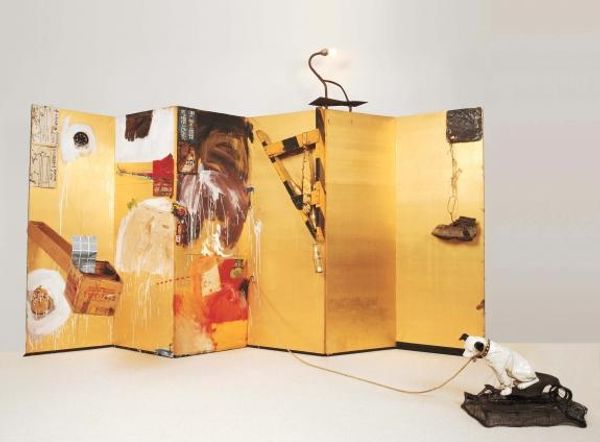
mixed-media, performance, sculpture, mobile, installation-art
#
mixed-media
#
performance
#
constructivism
#
geometric
#
sculpture
#
mobile
#
installation-art
#
miniature
Copyright: Alexander Calder,Fair Use
Curator: Before us is Alexander Calder's "Calder's Circus," a mixed-media construction created in 1931. Its playful dynamism, even in still photograph, feels remarkably engaging. Editor: Yes, there's a joyful yet melancholy feel to it. The stark contrast between the tiny figures and the deep background creates a dreamlike stage. Almost like a miniature, self-contained world. Curator: It's tempting to analyze it through Constructivist principles. Note the exposed wire, the basic geometric shapes of the figures. It reveals a deliberate rejection of illusionism in favor of material honesty and structural clarity. Editor: I see the circus as a potent symbol. The performers, the animals, all acting out roles prescribed by culture. It's a miniature world reflecting the larger, often absurd, spectacle of society itself. Are those figures suspended supposed to imply control? Curator: The lines from which they hang can be read in multiple ways, serving not just as supports, but also drawing literal connections across the frame, mapping spatial relationships through tension and interval. There is a deep logic embedded in its structuralism. Editor: True, the wires, in their bare simplicity, serve that function. And one cannot help consider the inherent drama of the circus—the balancing act between spectacle and control, freedom and constraint—all those things are human stories, really. Curator: Calder used found materials and rudimentary construction techniques. Consider also the influence of his time in Paris. One senses a rejection of academic stuffiness toward accessible forms—an attempt, like many other artists then, to engage a new reality. Editor: And "the Circus" does encapsulate many modern archetypes. These are universal stories represented through distinct symbols of human achievement. Curator: Agreed. In revisiting its structural underpinnings and considering these symbolic links, we can deepen our viewing experience to understand the essence of form. Editor: Ultimately, Calder captured something essential about us: our desire for play, performance, even perhaps our collective yearning for wonder.
Comments
No comments
Be the first to comment and join the conversation on the ultimate creative platform.
